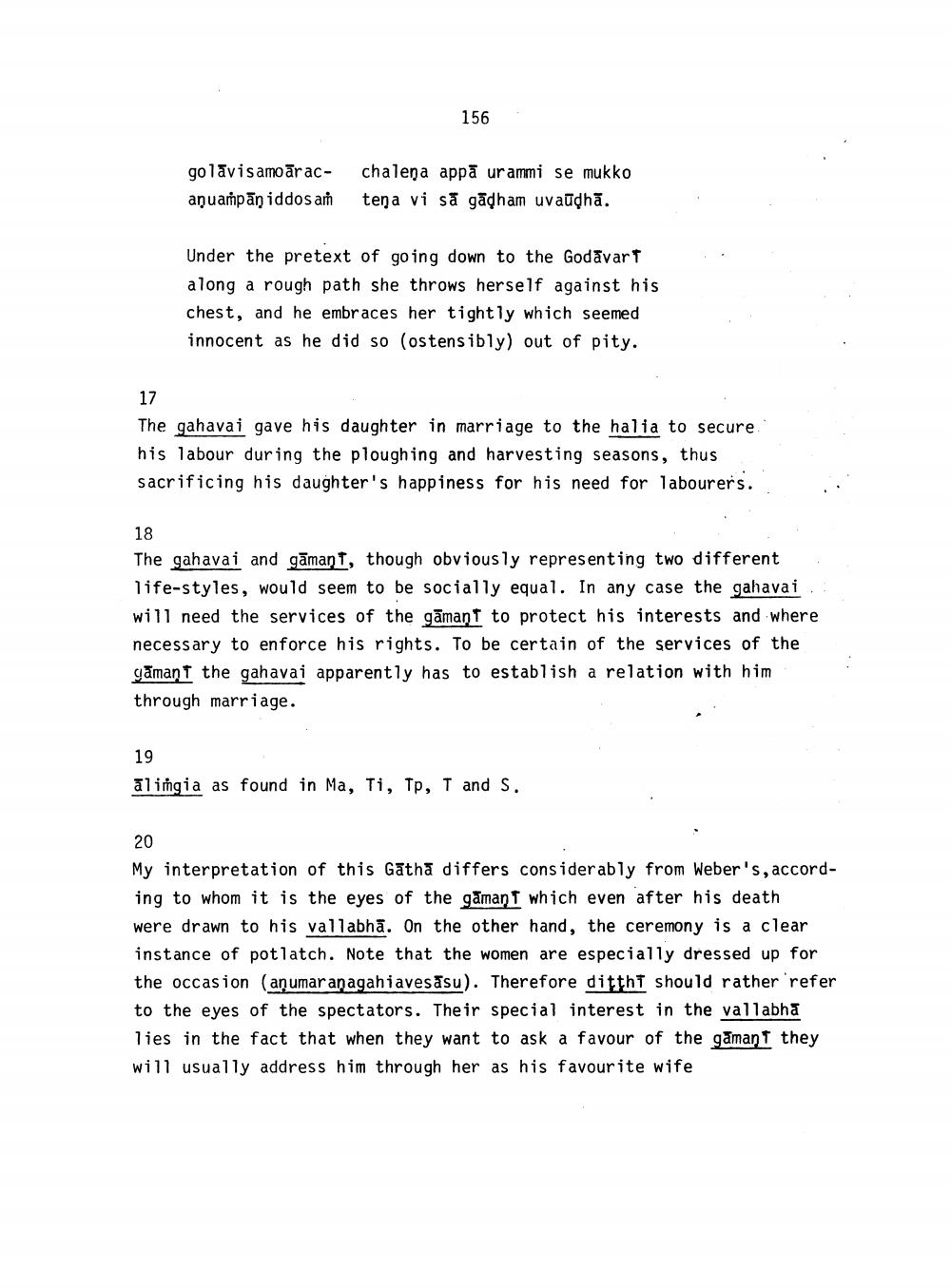________________
156
golāvisamoārac- anuaṁpān iddos aṁ
chalena appā urammi se mukko teņa vi sã gādham uvaudhā.
Under the pretext of going down to the Godāvart along a rough path she throws herself against his chest, and he embraces her tightly which seemed innocent as he did so (ostensibly) out of pity.
17
The gahavai gave his daughter in marriage to the halia to secure his labour during the ploughing and harvesting seasons, thus sacrificing his daughter's happiness for his need for labourers.
18
The gahavai and gāmant, though obviously representing two different life-styles, would seem to be socially equal. In any case the gahavai. will need the services of the gāmaņt to protect his interests and where necessary to enforce his rights. To be certain of the services of the gaman t the gahavai apparently has to establish a relation with him through marriage.
19
alingia as found in Ma, Ti, Tp, T and S.
20 My interpretation of this Gatha differs considerably from Weber's, according to whom it is the eyes of the gaman which even after his death were drawn to his vallabhā. On the other hand, the ceremony is a clear instance of potlatch. Note that the women are especially dressed up for the occasion (aņumar anagahiavesasu). Therefore ditthí should rather 'refer to the eyes of the spectators. Their special interest in the vallabha lies in the fact that when they want to ask a favour of the gamans they will usually address him through her as his favourite wife




